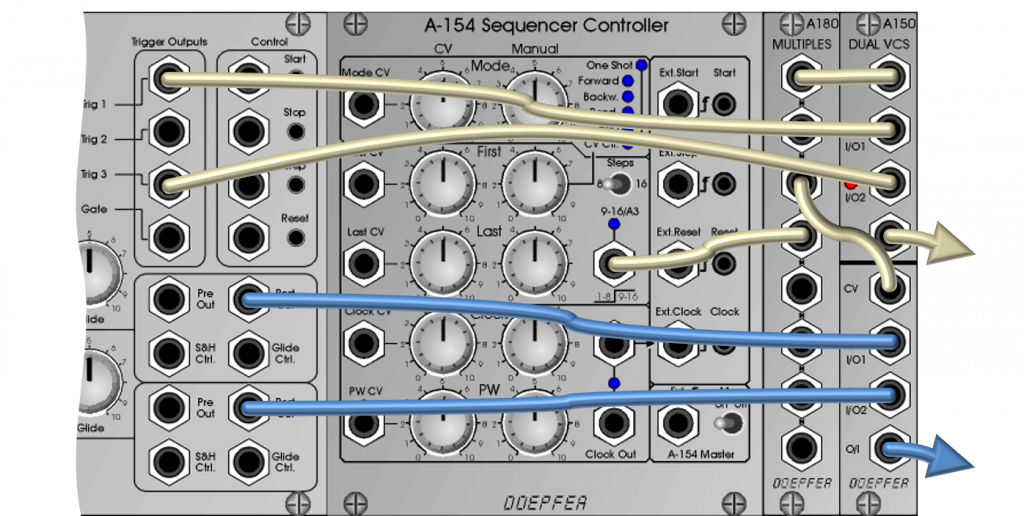The A-150-1 Dual Voltage Controlled Switch has two identical submodules. Each of the submodules is a bidirectional 2:1 switch, i.e. inputs and outputs can be swapped in this module. This gives us two possible uses:
- One of two inputs is connected to an output, the other input remains muted.
- Or an input is routed to one of two outputs, in which case the other output remains muted.
The choice of which input is connected to the output or which output is connected to the input is made via a control voltage.
User interface
Inputs (double):
EN-CTRL-A150-1-INOutputs:
EN-CTRL-A150-1-OUTCurrent version up to +/-12 V
Older versions of the module (before 2004) can only handle signals between -8V and +8V. The current A-150 (board imprint “A-150 DUAL VC SWITCH VERSION 2”) allow between -12 V and +12 V and thus also the switching of gate / trigger signals.
Switching the rows of a sequencer
Even with just one A-155 sequencer, you don’t have to do without 16 steps. With the A-150-1 and an A-154 sequencer controller, the two tracks of the A-155 can be played back alternately.

For an example of switching between two A-155 sequencers, see the description of the A-154 sequencer controller.
Usage for VCO control voltages
Since, in contrast to purely mechanical switches such as the A-182-2, programmable control electronics are used here, there is theoretically a risk of damage to the module in the event of small “patch errors”, for example when two outputs are connected to one another. For this reason, protective resistors are built into each switch to prevent the module from short-circuiting.
However, when using the module to control the pitch of VCOs (e.g. to switch between sequencer and keyboard), this leads to audible voltage losses. To compensate, one of the buffered multiples (A-180-3 or A-180-4) or another buffer amplifier (A-185-1 or A-185-2) must be used between the A-150-1 and the VCO (patching BEFORE the A-150-1 will not improve anything).
Technical specifications
| Width | 4 HP |
| Depth | 30 mm |
| Power requirements | 30 mA (+12V) / -10 mA (-12V) |
